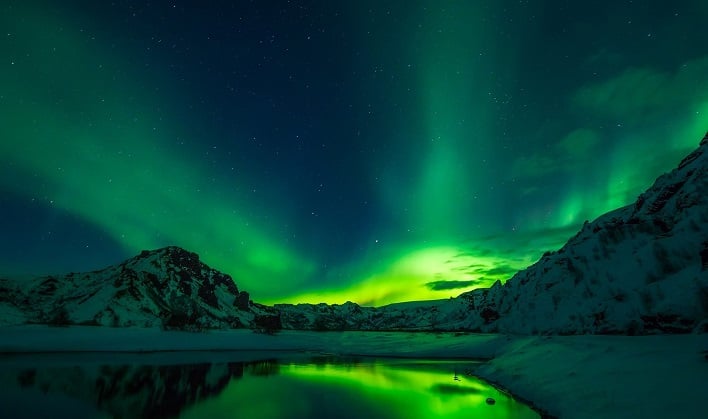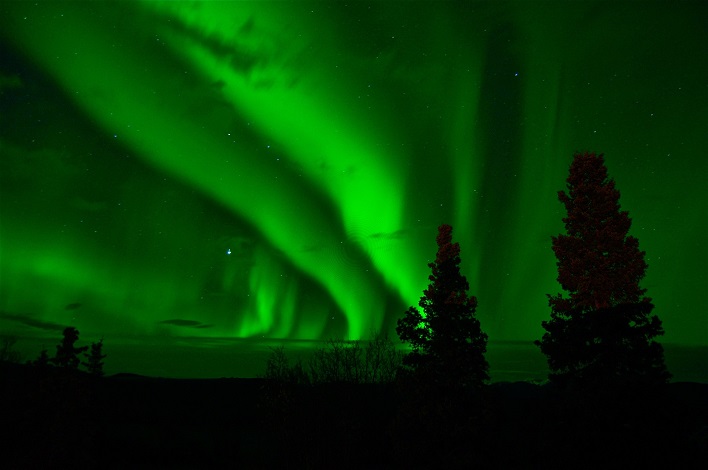Northern Lights Could Be Visible In A Few US Locations, How To Watch The Aurora

The aurora borealis, better known as the Northern Lights, enamor and amaze everyone that has the opportunity to take in the beauty of nature's light show in the night sky. But what exactly causes these poetic illuminations that seemingly dance before the background of the moon and stars.
An aurora is caused by interactions between the solar wind streaming out from the sun and Earth's magnetic field. The brightness and activity of an aurora depend on how strong the solar wind from the sun is. Moderate solar winds are enough to produce an aurora, meaning there is usually a weak aurora somewhere. But when a major solar wind hits the Earth's magnetic field and the interplanetary magnetic field embedded in the solar wind turns southward, events like the one predicted this coming Thursday can occur.

The second solar event that can cause moderate to strong auroras is a coronal hole. Coronal holes can cause high-speed solar wind streams, which when the streams hit Earth's magnetic field cause auroras. The geomagnetic storms and aurora that are produced by coronal holes are typically less active than ones caused by the larger and faster CMEs.
The different colors of the aurora are created when different atmospheric atoms and molecules are made hyperactive to various energy levels. For the most part, auroras are seen as a pale green color. However, they can also be seen in a deep red color as the result of atomic oxygen, while other colors come from molecules like nitrogen.
The 17 states where the aurora could be visible include New York, New Hampshire, Vermont, Maine, Maryland, Alaska, Washington, Oregon, Idaho, Montana, Wyoming, North Dakota, South Dakota, Minnesota, Wisconsin, Michigan, and Indiana, according to the University of Alaska Fairbanks Geophysical Institute.
Those in the area where the aurora will be visible will want to get as far from city lights. The highest time of activity is said to be between 10pm and 2am local time.

